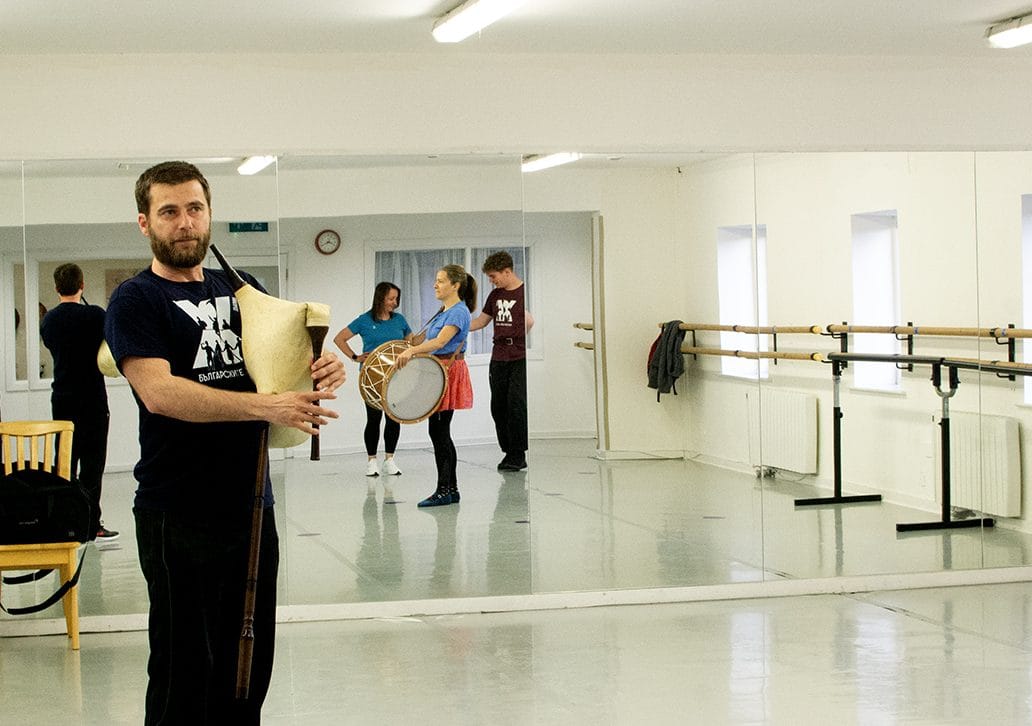As the government blocks funding for major social-housing projects, FF and FG councillors point fingers at ministers
As many as 1,325 social homes in Dublin city are at an advanced stage, with planning granted – but now with no clear funding.
Ten years into it, Slavi Begov says he’s looking for more Balkan folk-dance buffs as pupils.

On Friday evening, Slavi Begov strode past a crowd of young boys dressed in karate uniforms, and staggered with musical gear upstairs to the Nicola Farcas School of Ballet.
The dance hall is a bare rectangle with a low ceiling, a massive mirror, and flickering fluorescent lights.
It is here that Begov runs Balkan folk-dance classes. He is joined by Ingrid Biri. Soon, Galia Ivanova and Matei Cujbá arrive.
Cujbá is 17 and from Moldova, which he misses badly, he said. That’s why he comes to the dance sessions.
“I see people dance, and I say, this is like my country. This is my home away from home in Dublin,” he said, blushing.
Margarita Taneva joined later, when dancing was already in full swing. She works long hours at Jervis Shopping Centre.
It’s worth the hour-long bus trip to Santry, she said after. “It’s energising.”

Begov’s classes are usually on Wednesdays and Fridays. “This year is our tenth anniversary,” he said, tying the laces of his dancing sneakers.
He is looking to take on more Balkan folk-dance buffs as pupils. People who are interested, like he is, in the music of the region and in preserving its dying folk dances.
Dances that were carried from one person to the other before borders separated people and dance moves commercialised, he says.
He wants people who genuinely care about memorialising these dances, he says, not those who dance just to shed a few pounds.
Begov started dancing in his hometown in southwest Bulgaria when he was just a toddler.
His mum taught him the moves, he says. “And I danced at the weddings of their friends.”
He joined a dance ensemble around the age of seven. He has been dancing professionally on and off since, he says.
Begov moved to Ireland in 2006. Here, he works in information technology to make a living, but hasn’t stopped dancing, he says.
In the years since, he has been on an odyssey to learn all kinds of traditional folk dances, attending seminars in Bulgaria and absorbing knowledge to become a better teacher, he says.
Traditional dancers from different villages in Bulgaria came to teach participants, he says. Every group had its own moves and perspectives on dancing. Begov says he ate it all up.
Begov wants to dance to the traditional grooves from the times before the Balkan region was carved into different countries, including what is now Bulgaria.
That’s why he calls his class Balkan folk dance, not just Bulgarian dance, he said. “But these dances are disappearing,” said Begov.
He’s trying to keep them alive. When his mother, who taught him his first traditional dance moves, dies, he doesn’t want her dance to die with her, Begov said.
Biri, one of Begov’s students, said she was born in Hungary and, like others in the class, joined in to relive the joy of dancing to a rhythm that felt like home.
“There are no Hungarian folk dance groups in Dublin,” she says.
Begov and Biri kicked off the dance practice with their own music. Begov on bagpipes and Biri on drums.
Later, Balkan music blasted from a boombox in the corner.
“This is my region,” said Ivanova, who is from northwest Bulgaria, when one of the songs began.
Like Kurdish dancers of Iran, the group formed a chain. Each dancer held on to another’s belt, and they moved in circles.
The best dancer usually leads the chain, says Begov. And, like Kurdish dancers, the leader would wave a bit of cloth. On Friday, Begov waved his hand to make do.

He says he likes to explore the similarities between their routines and Middle Eastern dances and tunes, too. For some dances, they held each others’ hands or linked arms.
During each performance, Begov whistled, and Taneva hollered. “It’s shouting of joy,” said Begov.
The display of togetherness in these old dances is what makes them special, says Begov.
They were often performed at weddings and other times of celebration like when a villager welcomed a new child, he says.
After the class, the dancers trickled downstairs, and all of them except for Ivanova piled into Begov’s car for a lift into the city centre.
In the car, they talked about traffic, public transport, and how good it feels to cuss in Romanian.
[CORRECTION: This article was updated at 3.19pm on 19 June to correct that Galia Ivanova is from northwest Bulgaria, not southwest Romania. Apologies for the error.]